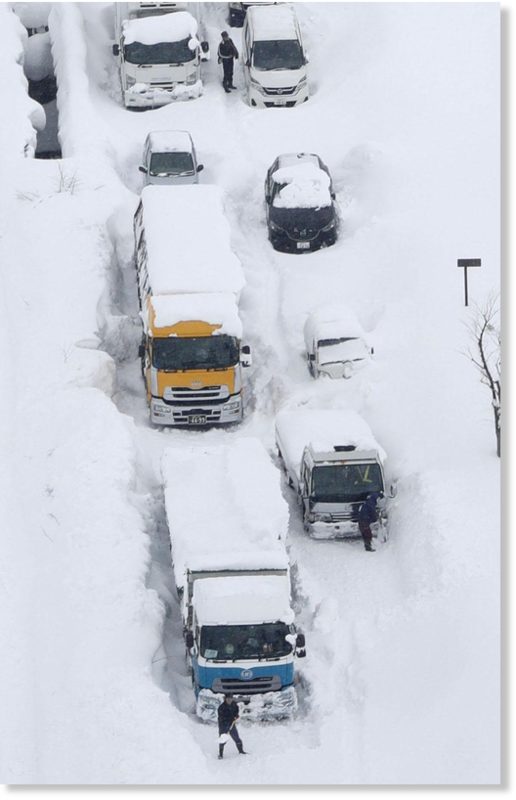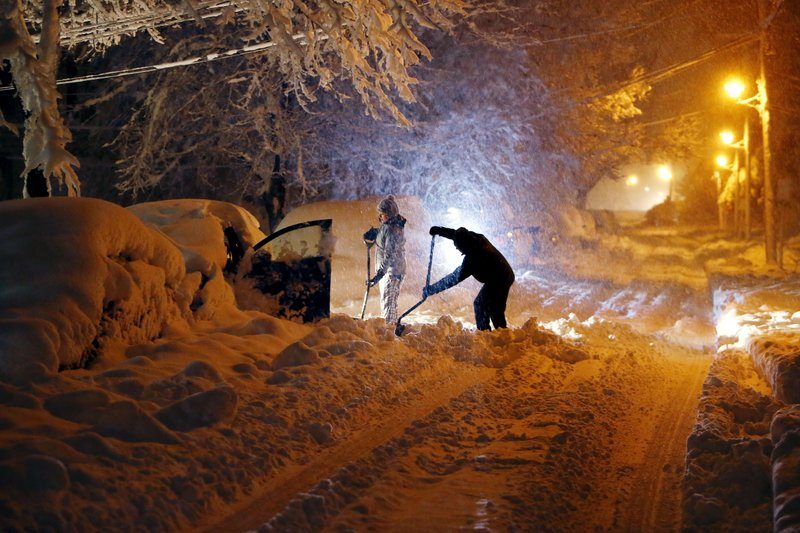
© KYODOAn aerial photo shows cars and trucks buried in snow and stranded on Route 8 in Sakai, Fukui Prefecture, on Wednesday 7th February 2018
Western Japan has just struggled through its coldest winter in 32 years.
The average temperature was more than 2C below usual and the conditions at times were extreme.
On February 6, more than 1,000 vehicles were stranded by heavy snow in the Fukui Prefecture in western Honshu. Those stuck had to be dug out by the military.
After a meeting on Monday,
Japan's Meteorological Agency declared that La Nina was to blame for the abnormal weather.
La Nina is also likely to have triggered the current flooding in Queensland, Australia
A slow-moving area of low pressure has caused torrential rain in western Queensland, which has remained across the region for the last week.
Some parts of the state have reported as much as 400mm of rain, far exceeding the monthly average of 50mm.The town of Winton received more rain in the last three days than the past year. A total of 228mm of rain was recorded in 72 hours up to 9am on Tuesday, but in the previous 12 months, only 120mm fell.
This wet weather is typical of La Nina, which usually brings increased rainfall in eastern and northern Australia. Despite the flooding it has caused, the rain is very welcome because many parts of Queensland are currently in the grip of a drought.
Other countries are also on alert for disruptive weather.


Comment: See also: US east coast hit by 36 inches of snow and counting - 6 inches per hour in Vermont (VIDEOS, PHOTOS)